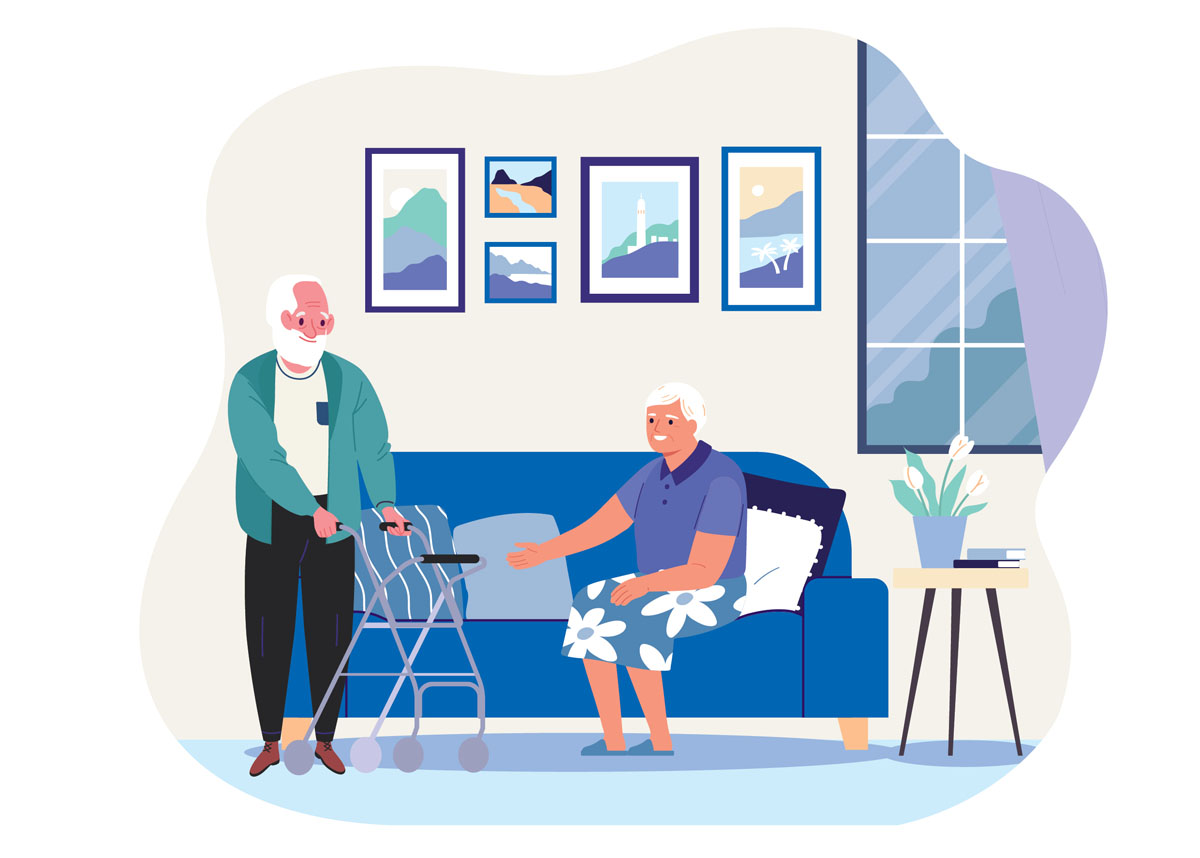- Home
- Respite Care
- Respite Information & Support
- How Long Can Someone Stay in Respite Care?
How long can someone stay in respite care?
Understanding the 63 day allowance | Going past the respite allowance | Minimum time to spend in respite care | Types of respite care
Posted 3rd August 2023 | 4 minute read
Written by Jesse Gramenz Reviewed by Julie Dymock
Reviewed by Julie Dymock

Most carers have heard of respite care. But how long can someone stay in respite? Here's everything you need to know about the length of a respite stay whether it be in aged care, at home or in the community.
According to the Australian Government's guidelines, you can access up to 63 days of subsidised respite care in a financial year. However, the specific length of stay in respite will depend on various factors like recovery progress, personal care needs, and the availability of long-term care solutions.
In Australia, an average respite stay is approximately 3 weeks.
The bottom line: The duration of respite care stays can vary depending on your situation and the types of respite you want to access.
Understanding the 63 days of subsidised respite care
In Australia, the government provides a subsidy for up to 63 days of respite care per financial year. This means that families can place their loved ones in a safe, supportive environment, like St Vincent’s, for a period of time while they attend to other commitments, rejuvenate, or take a break.
This not only ensures the ongoing quality care for the elderly individual but also supports the mental and emotional wellbeing of the family members.
What happens if I go past 63 days?
If your need for more care is assessed as being complex and ongoing, additional days may be granted through an ACAT (Aged Care Assessment Team).
If additional days aren’t granted, care beyond the 63 days may be privately funded.
The difference in private funding could mean paying as little as $60 a day in respite to over $200 a day in respite (depending on the provider).
If you’re exceeding 63 days of respite, you may want to consider care options in the longer term such as home care and residential respite care
Always consult with your respite care provider to explore all available options and ensure continued, uninterrupted care.
Residential respite care: Some providers will offer respite for a minimum of two weeks but this depends entirely on the provider. This minimum is in place so that you can have a full and proper time to relax, rejuvenate and make the most of what the home has to offer.
In-home care or community respite: Respite can be for as little as a few hours or overnight either in your own home, or at a cottage or community centre setting.
Types of respite care and how long you would use them for
There are several types of respite care, each offering unique benefits and catering to different needs and circumstances, each of which will affect the location and length of stay for respite care.
Residential Respite Care: Residential respite refers to a temporary stay in a nursing home or aged care facility, usually for two or more weeks. This is the best option if continuous support is required for most daily tasks. Along with a room and hotel-type services such as meals, laundry, and social activities, you will also receive personal and medical care.
It's an excellent choice for post-surgery recovery or when the primary caregiver is sick, on holiday, or just needs a break. This can take the form of transition care which provides support following a hospital stay, assisting in recovery and regaining independence sooner.
In-Home Respite Care: With this option, a trained care worker comes to the person's home and provides care for a few hours. This is a great solution for carers who need a break but wish for their loved one to remain in the comfort of their own home.
Community Respite Care: This involves care in a community setting, such as a day centre or club, where the individual can interact with others while their carer takes a break. Community respite is provided under the Commonwealth Home Support Programme (CHSP), subject to eligibility criteria. Community respite is available during the day, overnight or for the weekend, aimed at those who need occasional support to manage some of their daily tasks and activities.
Remember, the length of a respite stay is flexible and can vary between different types of care. It's all about finding the solution that best meets your unique needs and circumstances.
Parting thoughts
From a few hours to a few weeks of respite, there are options available to help suit what you need (and for how long). The key to getting started is to reach out to My Aged Care and apply for an ACAT assessment.
By knowing the level of care you or your loved one needs, you can go with confidence to find the right type of respite care for you.